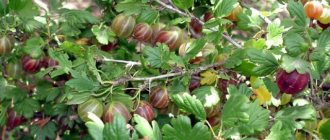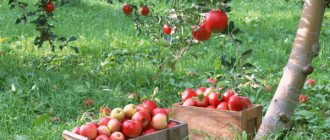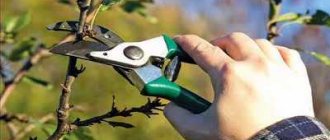What kind of gooseberry is this?
The gooseberry variety Beryl was developed in the 70s. XX century at the South Ural Research Institute as a result of crossing the Malachite and Samorodok varieties. The author of the development was Dr. Ilyin. The culture was included in the State Register of the Russian Federation in 1998, after which the variety was zoned in the Ural and West Siberian regions.
Agrotechnical features of cultivation
Gooseberry Beryl does not require special conditions for germination. It can be planted in clayey, loamy, sandy loam or sandy soil. Preference should not be given to acidic, cold, marshy soils. The best yield indicators are observed when planting bushes in loamy soil with a large amount of humus.
The variety is self-fertile and does not require the presence of other pollinators nearby.
Characteristics and description of bushes
Gooseberry bushes are characterized by medium height (up to 1 m) and moderate spreading of the crown. The lower part of the shoots is covered with weak single spines pointing downwards, which makes harvesting easier. Large green leaves have a smooth surface. Gooseberries actively bear fruit 5 years after planting.
Reference. The yield is from 8 to 10 kg of berries per bush.
Withstands temperatures down to -38°C, as well as short periods of drought. Does not like excessive dampness. It has good immunity, is resistant to powdery mildew and fruit rot, but is often susceptible to septoria.
Description
The height of the plant is average, spreading is moderate, the crown is neat. Beryl bush is dense. The growing arched shoots are medium thick, with hanging tops. The bark has a medium anthocyanin color. The spininess is insignificant. The spines are weak, single, directed downwards, less often upwards or perpendicular to the shoot, most often located in the lower part of the shoot. Zero shoots are thornless. The leaves are large, green, pubescent, soft to the touch, with a slightly wrinkled, shiny surface. The leaf blade is smooth, has a concavity along the central veins. The gooseberry leaf is five-lobed, with deep notches. The middle blade, rising above the lateral ones, has a rounded-elongated outline with pointed apices and additional protrusions. The central veins of the lateral lobes are connected at a right angle, less often at an obtuse one. The lateral lobes are widely spaced, their tips slightly pointed. The basal lobes are well developed. The base of the leaf is medium in size and has a wide triangular shape. The denticles of Beryl leaves are large, slightly curved. The petiole is light green, normal in length and thickness, slightly pubescent. The petiole trace is slightly rounded. The variety's buds are of normal size, oblong-oval, brown in color, and grow deviating from the shoot. Gooseberry flowers can be said to be large, glass-shaped, bright or medium colored. They form a two-flowered inflorescence. Sepals are separate, wide, of normal length, recurved. They are colored pink or pale pink, sometimes yellowish-green with a pink tint. The ovary is bare, round. The peduncle is long, thin, slightly pubescent, green.
Beryl berries are quite impressive in size, sometimes 2 times larger than cherries, relatively one-dimensional, spherical in shape. The usual weight is from 3.9 to 9.2 grams (2.8 - 3.4 grams according to the State Register of Varieties). The skin is thin, without pubescence. The color is yellowish-green or light green, rather even whitish, sometimes a slight reddish tan appears, the venation is clearly visible. The calyx is medium in size, open or closed. The gooseberry pulp is juicy and has few seeds—the correlation between the weight of the berry and the number of seeds is only 0.24. The taste is good, sweet and sour, closer to dessert. Taster rating: 5 points (according to the State Register - 4.3 points). The stalk is long, thin, green. 100 grams of the raw product contains: the sum of sugars - 8.0 - 9.85%, titratable acids - 0.52 - 2.2%, ascorbic acid - 17.2 mg.
Characteristics and description of fruits
Light green Beryl berries are spherical in shape. Their weight reaches 9 g. The skin is thin but durable, the flesh is juicy. The taste is sweet with a slight sourness. The fruits tolerate transportation well without losing their presentation. The berries are used both in their natural form and for the production of desserts, sauces, marinades, and alcoholic beverages. Traditional medicine uses gooseberries as the main component of medicinal potions. The fruits are also used in cosmetology to make creams, scrubs, masks, and lotions.
Characteristic features of the variety
Having considered the main characteristic features of the variety, you can understand how to grow it. And what you need to pay attention to when planting it in your summer cottage.
How much harvest can the variety produce? The variety has good yield. An adult bush can produce up to 10 kg of harvest per season. Due to the fact that gooseberries have an average ripening period, the first berries can be picked already in mid-July.
Weather conditions do not affect the amount of harvest. The amount of harvest depends on how you care for the plant. And also on what age he is.
Resistant to drought and frost. Due to the fact that the variety does not tolerate even the lowest temperatures, it is not necessary to cover it for the winter. Well suited for growing in the regions of the Urals and Siberia.
Does not like excess moisture. Therefore, it can tolerate dry weather well for a short period of time.
When does the variety begin to ripen? The variety is distinguished by its early ripening period. Therefore, you can already pick berries in mid-July. But this will also depend on the weather conditions of a particular region.
Diseases and pests. The variety has good immunity to many diseases. But it can be susceptible to septoria. This is a fungal disease that is characterized by the appearance of gray or rusty spots on the leaves, with a yellow border. If the bush has already been highly susceptible to infection, the leaves begin to dry out. Then they begin to fall off.
Transportation. The berries tolerate transportation well, even though the skin of the berries is thin. Can be stored for several days.
Advantages and disadvantages of the variety
Among the advantages of the variety are:
- frost resistance;
- ability to tolerate short-term drought;
- consistently high yield and excellent taste of fruits;
- resistance to powdery mildew;
- features of the location of the spikes, as well as their small number;
- self-fertility;
- good transportability during the period of technical ripeness;
- versatility of using berries;
The disadvantages of the variety are:
- predisposition to septoria;
- risk of damage by sawflies;
- decrease in yield due to violation of agricultural technology;
- poor keeping quality of ripe berries.
Brief description (pros, cons)
Advantages of the variety
- Winter hardiness. Without shelter, it can withstand temperatures down to -35˚C.
- High yield (up to 7-9 kg of berries per bush).
- Good transportability. Ripe berries can withstand long-distance transportation without deformation.
- High keeping quality.
- Resistance to fungal infections, powdery mildew.
- Large fruits, excellent taste.
- Self-fertility. No pollinator planting required.
- A small number of thorns.
- Versatility. The berries are used fresh, as well as for making jam, wine, jelly, and compotes.
- Stable fruiting.
- Early maturation. The first berries are harvested in mid-July.
- Powdery mildew resistance
Among the disadvantages of the variety, the possibility of infection by septoria is noted.
Septoria blight is a fungal disease that appears as gray and rusty spots on the leaves.
Growing technology
Gooseberry Beryl grows on soils with good moisture and air permeability (clay and loam, sand and sandy loam) with a moderate level of acidity (4.6-5.0 pH). Does not like swampy soils with close groundwater. For planting, choose an area illuminated by the sun and protected from drafts. Caring for shrubs consists of standard procedures: watering, fertilizing, pruning, preventing disease and pests.
Attention! The most comfortable areas for gooseberries are considered to be between rows of trees planted on sunlit hills.
Landing dates and rules
Gooseberries are planted both in early spring after the soil has thawed and warmed up, and in the fall, in September - October, 2-3 weeks before the onset of frost. When planting shrubs, adhere to the following sequence:
- Prepare planting holes measuring 40x40x40 cm.
- The holes in a row are spaced at intervals of 1.5 m, and adjacent rows are spaced 2 m apart.
- To fill the planting hole, prepare a soil mixture from ordinary soil, a bucket of rotted manure, 1 tbsp. wood ash, 30 g of superphosphate and 20 g of potassium phosphate.
- Before planting, the tops of the shoots are slightly trimmed, the roots are shortened and treated with a root formation stimulator.
- A small amount of prepared substrate is poured into the planting hole, forming a mound from it.
- The seedling is placed on a hill, carefully spreading the roots along the slopes.
- Fill the voids with soil mixture, lightly compacting each layer.
- Plantings are watered and covered with natural mulch (straw, sawdust, dry leaves or rotted manure).
Further care consists of watering, fertilizing, pruning and pest control.
Watering
Regular watering is important during budding, flowering, and also during the active phase of fruit development. Therefore, gooseberries are watered at the root at least once a week at the rate of 1 bucket of water for each bush. At the same time, they try to protect the leaves and shoots from falling drops. Each procedure is followed by loosening the soil while simultaneously removing weeds.
Important! 2 weeks before the start of harvesting, moisturizing the soil under the bushes is stopped.
Top dressing
To achieve high yields, they resort to fertilizing. At the end of spring, liquid fertilizers rich in nitrogen, mullein, chicken droppings, and urea are added to the soil. At the end of flowering, in June, fertilize with potassium-phosphorus fertilizers, adding 20 g of potassium phosphate or 30 g of superphosphate to each bush. In the first half of July, the soil under the gooseberries is spilled with magnesium nitrate at the rate of 20 g of the substance per bucket of water. In the fall, the bushes are again fed with phosphorus-potassium fertilizer in the same dosage as in the summer.
Trimming
Every year in early spring, sanitary pruning of gooseberries is carried out. Removing dry, diseased and old shoots avoids thickening of plantings and weakening of plants, as well as chopping of berries. The current year's shoots are shortened by 1/3 of the length. Of the basal stems, only the 4 strongest ones are left, the rest are cut out.
How to plant Beryl gooseberries correctly
The plant can be planted both in spring and autumn. But autumn is preferable. Approximately 3-4 weeks before winter frosts occur, so that the root system has time to adapt to the new location. The place should be open and well lit so that there are no drafts.
Also, do not plant near groundwater. Before you plant the plant, you need to prepare the soil in advance:
- In order to reduce the acidity level, it is necessary to add lime or dolomite flour.
- Clear away debris and various weeds.
- If the soil is heavy, it is recommended to add humus (compost), peat, and sand.
- For 1 sq.m. It is recommended to add humus (1 bucket), superphosphate (30 g), potassium phosphate (20 g), wood ash (1 cup).
This nutrient mixture can be added at the time of planting. It is necessary to prepare a landing hole with dimensions of 50*50. Add a fertile mixture to it, and place the roots of the bush on top of it. Gently straighten them, sprinkle with soil, sometimes lightly compacting it to avoid voids in the soil.
The root collar should not be buried; it should be above the soil level. Suitable for planting are seedlings that have reached the age of 2 years and have a good root system. The seedling should have approximately 3-4 shoots. Before planting the plant, it is necessary to remove all the leaves and shorten the shoots.
After planting is completed, it is necessary to water the seedling thoroughly, create a circle around the trunk and mulch the soil. One year after planting, there should be no berries on the bush. This will allow the plant to better gain strength and bring a healthy and rich harvest next year.
Reproduction
Gooseberry Beryl is propagated by layering and cuttings. In the first case, young shoots are bent to the ground and laid horizontally, after which they are sprinkled with soil. After the sprouts appear, they are hilled up and watered. With the arrival of autumn, the branch is cut off from the bush, dug up and divided into parts. Each resulting seedling is moved to a permanent place of growth.
For propagation by cuttings, strong young shoots are selected. The branches are divided into parts so that each of them bears 4 buds. The cutting is deepened into loose, fertile soil, leaving an area with one bud above the surface. With the arrival of winter, it is covered, and in the spring further cultivation is continued, leaving 2 developed buds and moistening the soil as needed. Next spring, the seedling is assigned to a permanent place of growth.
Diseases and pests
Most often, the variety is susceptible to septoria. This disease is caused by a fungus. The infection becomes noticeable due to spots on the leaves. Over time, the leaves begin to fall off. If the weather is cloudy and rainy outside, this will only contribute to the development of the disease.
Also, the neglect of the bush is also a provoking fact. The disease has a strong impact on the crop. How you can fight this disease:
- Remove and burn leaves that have fallen from the bush.
- Digging the soil.
- Thin out thickened branches.
- Apply fertilizers so that the plant can better resist disease.
- Treat with antifungal agents.
Gooseberries are most often attacked by aphids, sawflies and moths. If you detect their presence in time, you can carry out treatment using an ash-soap solution. Or use Bordeaux mixture.
Gooseberries of the Beryl variety were able to win the love of many summer residents and take their place of honor among other berry crops. The excellent taste of the berries will delight you for a long period of time. The main thing is to pay a little attention to this berry.
Reviews from summer residents
Beryl gained the greatest popularity among summer residents from regions of risky agriculture. Here are a few reviews.
Alexander, Chelyabinsk: “The variety pleased me with its yield and excellent taste. When harvesting, I did not feel any thorn pricks. But the branches tend to spread out on the ground, so you can’t do without support.”
Antonina, Tyumen: “The gooseberries are fully ripened during the short northern summer. The berries are sweet and aromatic. Some were eaten in their natural form, the rest were used for compotes and jam.”
Igor, Yekaterinburg: “Every spring I treat the bushes with copper sulfate and cut off old branches. Gooseberry has never been sick. I advise everyone not to save space and maintain the required distance between bushes.”
Reviews
I have been growing the Beryl variety for several years. I read a lot of reviews and descriptions of the variety, but nowhere did I find information about the need for arranging supports. I will say that at first I also did not pay attention to this moment, but then, when the branches were on the ground, I realized that it was impossible to do without support. Moreover, my supports are different; I use arcs on several bushes; I made a support from planks for one bush. Any option works, the main thing is to raise the branches from the ground so that the berries are not dirty from the ground and do not rot. In addition, the supports allow the stems to be better oriented towards the sun, the crop ripens faster. My wooden support consists of four pegs onto which I place horizontal strips at a height of 40-50 cm from the ground. By winter, I either remove the supports or try to bend the branches under the slats so that they become closer to the ground and do not stick out above the snow. Maybe due to the supports, I have never encountered septoria, which develops primarily from excess moisture.
I live in Tyumen. For us, yield and fruit size are still secondary criteria. The main thing is that the plant does not freeze. You can also plant peaches for a few months, but there’s no point in such gardening. I have been growing beryl for seven years, and so far there have been no problems with wintering, so I can confidently recommend the variety to other gardeners in the Urals and Siberia.
Having an extensive list of positive characteristics, Beryl gooseberry is confidently becoming one of the popular varieties in regions with a cold winter season. Gardeners are attracted by its simple care, as well as the opportunity to diversify the diet with large and pleasant-tasting berries already in June.
Characteristics of the variety
One of the main tasks, along with breeding a variety with strong immunity, was to create a crop with high productivity and unpretentiousness to weather conditions. According to reviews from gardeners, gooseberries of the Beryl variety fully meet the characteristics declared by the originator.
Drought resistance, frost resistance
The new species contains the genetic material of frost-resistant varieties. Beryl gooseberry was bred for Siberian winters, so the variety safely tolerates temperatures down to -350 C. If young branches freeze, the shrub intensively forms new shoots, thus the plant is completely restored. Gooseberries bloom early, the first flowers appear in early April, the flowers are not afraid of the spring drop in temperature, freezing does not affect fruiting.
The drought resistance of the Beryl variety is low; if there is no systematic precipitation, the plant requires moderate but regular watering. The root system of the berry bush is superficial; the soil should not be allowed to become waterlogged. With a lack of moisture, the berries become smaller, crack, and become sour.
Fruiting, productivity
Gooseberry variety Beryl is a self-fertile crop. The productivity of the bush can be increased if pollinating varieties are planted nearby; the Ural emerald is considered a good option. The flowering and fruiting periods of shrubs are the same.
The ripening of Beryl gooseberries is simultaneous; the fruits reach biological ripeness at different times, depending on the growing region. In Siberia, the harvest takes place in mid-July, in the South - in early June. The peak of fruiting occurs in the fourth year of the growing season, the average yield is 5.5 kg from each bush.
The early-medium variety ripens during the hot months of summer. Ripe berries are removed immediately to prevent them from falling off; they do not stay on the bush for more than four days. If the plant has enough moisture, the berries do not crack or bake in the sun. The peel is quite dense and withstands minor mechanical stress during transportation.
Application area
The chemical composition of gooseberries contains a large number of vitamins and microelements, the berries have a high energy value, and the fruits are consumed fresh. Gooseberries retain their composition after freezing. After heat treatment, it loses 40% of its beneficial substances. You can make preserves and jams, but they turn out liquid and have an unsightly color. The shelf life of the berries is within 7 days, gooseberries tolerate transportation well, and the variety is suitable for commercial cultivation.
Variety resistance to pests and diseases
Beryl is a gooseberry with stable immunity, practically not affected by parasitic insects, the only pest being aphids. If the watering regime is followed, the gooseberry does not get sick; if the root system is over-moistened in the cold summer, damage to septoria, anthracnose, and very rarely powdery mildew is observed.
Advantages and disadvantages of the variety
Gooseberries of the Beryl variety are a common crop in household plots; gooseberries have earned popularity due to their advantages:
- frost resistance;
- high productivity;
- a perennial bush bears fruit in one place for more than 10 years;
- suitable for industrial cultivation;
- refers to thornless varieties;
- produces large berries with a high tasting score;
- the fruits do not bake or crack in the sun;
- The harvest is stored for a long time and transported successfully.
The disadvantage of this variety is its dense crown and a certain watering regime.
Attention! The self-fertility of the Beryl gooseberry is 45%, the yield indicator is unstable, and periodicity of fruiting is observed.
Care
The Beryl variety is unpretentious in care, but to obtain a rich harvest it is necessary to follow certain recommendations.
During fruiting, gooseberries are watered generously at the root at least once a week.
- So, in the spring it is necessary to uncultivate the crop. Such an event will prevent the plant from various diseases, as well as the number of shriveled branches.
- During the summer it is necessary to loosen the crop at least 5 times.
- At the same time, do not forget about cleaning weeds, which are carriers of a large number of diseases.
- You need to loosen the gooseberries carefully so as not to damage the roots . To get air in, it is necessary to mulch the crop after watering.
- Bushes need to be pruned regularly ; dry branches and leaves must be removed.
- Annual growth should be removed at the end of the season (no more than 4 shoots should be left).
There is no need to leave berries on the bushes in the first year of planting; this will ensure a rich harvest in the next season.
Planting and caring for gooseberries
Gooseberries are planted on the site in the spring, when the soil has completely warmed up, or in the fall, before the onset of cold weather. In each region, the deadlines are focused on climate characteristics. The place for the crop is determined in an open area; the plant is suitable for a neutral, light, fertile soil composition. Gooseberries are propagated by layering, cuttings, the best option is planting material from the nursery.
For example, in the photo there are Beryl gooseberry seedlings that meet all the requirements:
- the presence of at least 2 processes;
- presence of fruit buds;
- leaves without spots, smooth bark, root system without dry fragments.
Seedlings can be pruned immediately or this procedure can be carried out after planting.
Planting algorithm:
- The nutrient mixture is prepared in equal proportions: top layer of soil, ash, organic matter, peat, sand.
- Dip the root of the seedling for 3 hours in HB-101 (growth stimulator).
- Dig a planting hole 40 cm wide and 55 cm deep.
- Part of the soil mixture is poured onto the bottom.
- The seedling is installed vertically, the roots are distributed.
- Cover with ash and the rest of the mixture, leaving the root collar about 5 cm above the surface.
- Compact the soil, water, and mulch the root circle. According to the parameters of the planting hole, to retain moisture, make a ditch 10 cm deep.
Aftercare
The berry bush bears fruit for more than 10 years; in order to get the desired harvest every year, the Beryl gooseberry requires care:
- In the first three years of the growing season, in spring and autumn, the plant is fed with nitrogen fertilizers.
- A bush is formed with ten shoots, old branches are replaced with new ones if necessary, young shoots are pruned, and the bush is thinned out in this way.
- Gooseberries do not require garter; the branches can withstand the weight of the fruit.
- Watering is based on weather conditions; the soil should not be allowed to dry out.
- To prevent rodents from damaging the crop, chemicals that are toxic to small animals are placed around the bush.
Beryl gooseberries are not covered for the winter; the variety is frost-resistant and quickly recovers in the spring. Water-recharging irrigation is carried out, the roots are hilled up and covered with a layer of mulch.
Subtleties of growing crops
As with any plant, the correct planting and cultivation of Beryl is important - the further growth and fruitfulness of the shrub depends on this.
Soil requirements
Before planting gooseberries, several conditions must be met:
- the soil should not be acidic. Otherwise, the acidity must be reduced with limestone or dolomite flour at the rate of 300 grams per bush;
- the planting hole should be dug up, cleared of weeds and debris;
- if the soil is heavy, you need to dilute it with a mixture of sand and humus;
- fertilize the soil with 20 liters of humus, 150 grams of ash and 25 grams of potassium phosphate and superphosphate.
It is better to plant gooseberries at elevations, where there is free access to sunlight and there are no strong winds.
Important! Beryl should not be planted in swampy areas or in places where groundwater flows near the surface.
Boarding time
Beryl should be planted in the spring or autumn (late September-early October) period, several weeks before the cold weather, so that the roots take root.
Important! The temperature at night should not fall below 5 degrees.
Selection of planting material
Selecting a Beryl gooseberry seedling is an important process. An unsuccessful bush may not take root or produce a poor harvest. Therefore, when purchasing gooseberries, preference should be given to seedlings:
- with an open root system.
Age – no older than 2 years, with 2-3 strong shoots, no shorter than 20 centimeters. The kidneys are enlarged, but not dilated. The tops may be covered with greenery. The roots are moist and developed. Externally, the seedling should not be damaged;
- with a closed root system (container growing).
There is no specific age. Developed and leafy shoots are 40-50 centimeters. Important! The roots should form a dense lump of earth. External damage is not allowed.
Disembarkation process
It is extremely important to place the gooseberry seedling in the ground correctly:
- dig a deep hole, fill it with compost and compact it so that there are no voids. Important! The planting hole is fertilized only during spring planting. In autumn, fertilizers are not needed - various types of parasites and diseases like to overwinter in them;
- Place the seedling strictly vertically. The core of the bush is deepened into the soil by 8 centimeters;
- roots are distributed evenly;
- when filling in the soil, you should carefully compact the layers so that there are no voids and the soil tightly covers the bush;
- after planting, the buds are pruned so that there are no more than 5 on each branch;
- pour a bucket of water;
- After absorption, sprinkle the ground with sawdust or leaves.
See also
Description and characteristics of the gooseberry variety Northern Captain, planting and careRead
Pest and disease control
A fungal infection appears on a berry bush in the form of yellow and then brown spots on the leaves. The berries stop growing and are covered with a dense gray coating on top. They get rid of fungal diseases by treating the bushes with Topaz, Fitosporin or Oxyx.
Sprayed in early spring, before the procedure the bush is doused with hot water, the activity is carried out until the buds open. For preventive purposes, the bush is treated with Bordeaux mixture in the fall and spring. If aphids are detected, get rid of the ant colony and water the crown of the plant with a solution of laundry soap. If the aphids remain and continue to spread, spray the bush with herbicides.
Features of the variety
The variety has gained great popularity due to its frost resistance and high yield. The Beryl variety requires minimal care. Additional measures are necessary only if a disease is detected on the bushes.
The berries on the bushes are distinguished by their large size and taste characteristics . Productivity is high and stable.
Gooseberries take root well if planting rules are followed. In the autumn, you also need to prepare the plant for wintering, and in the new season the bushes will delight you with a rich harvest.











